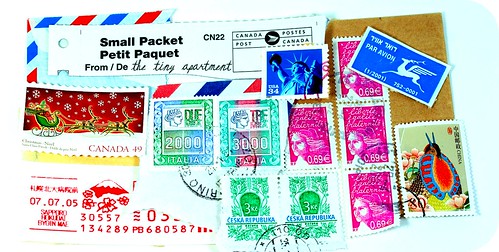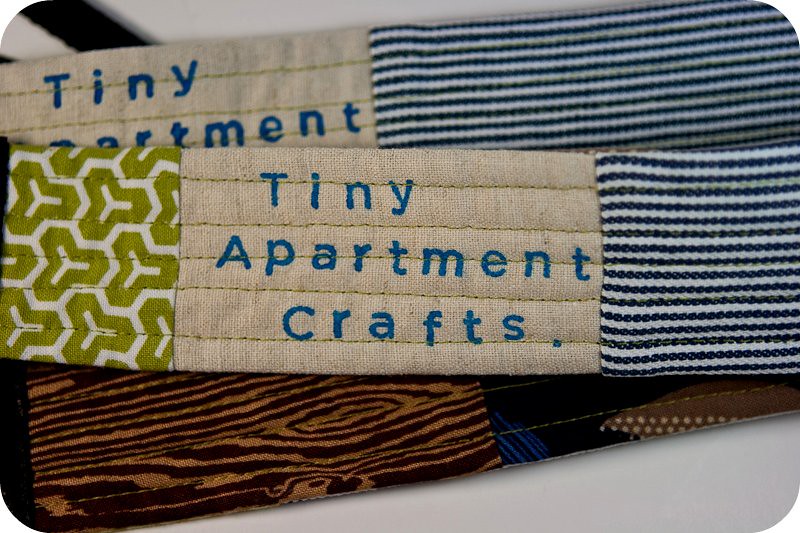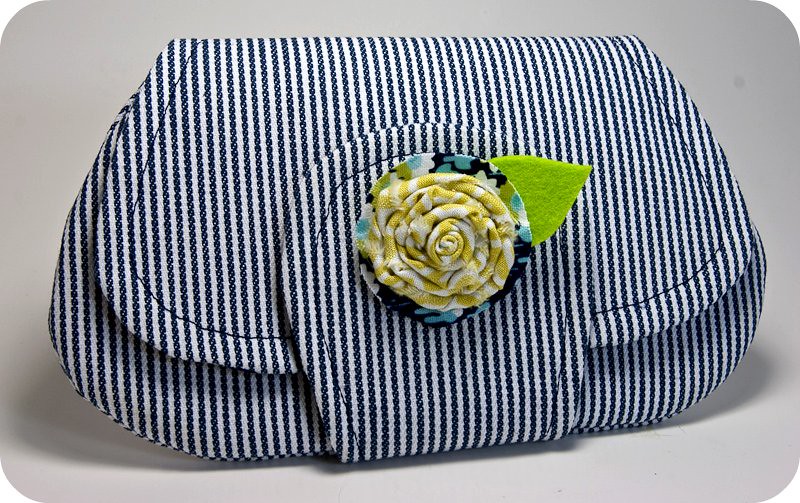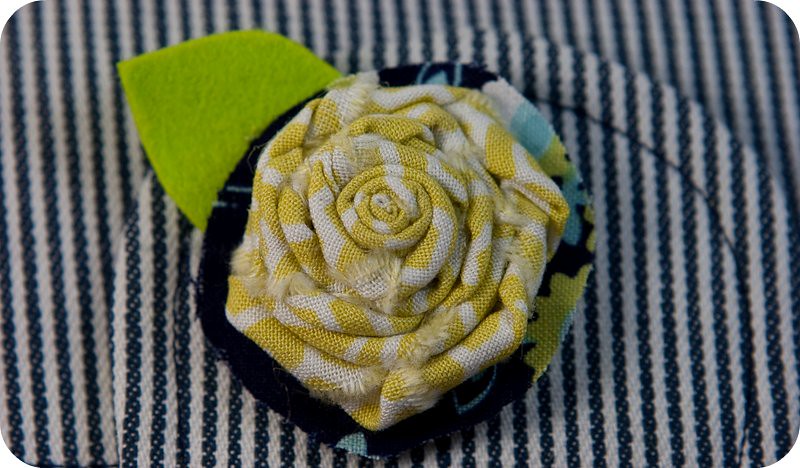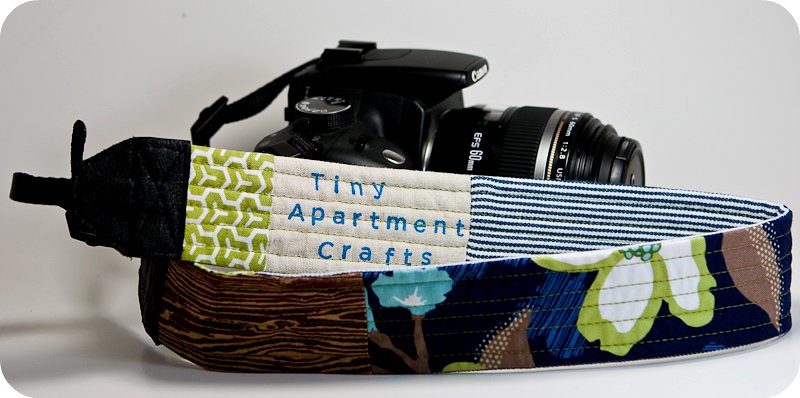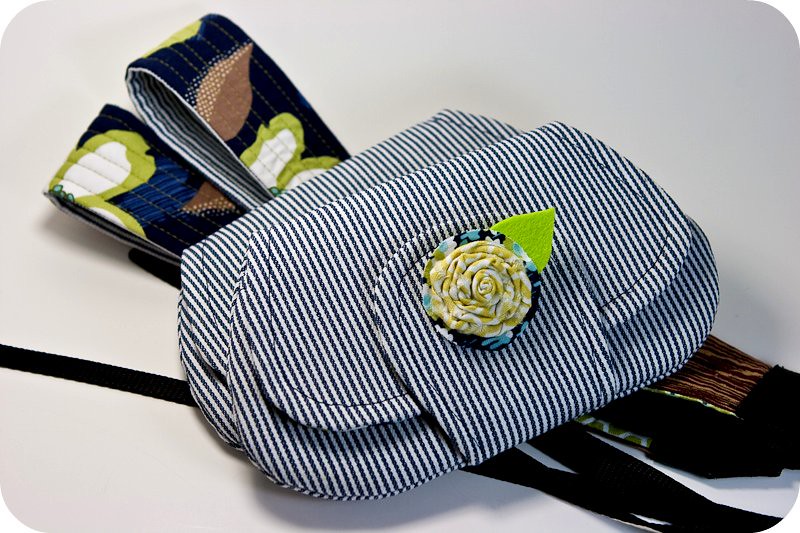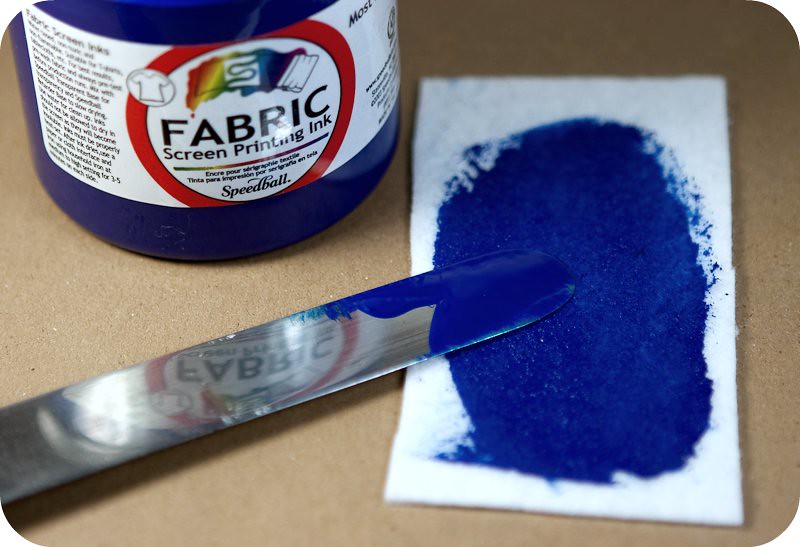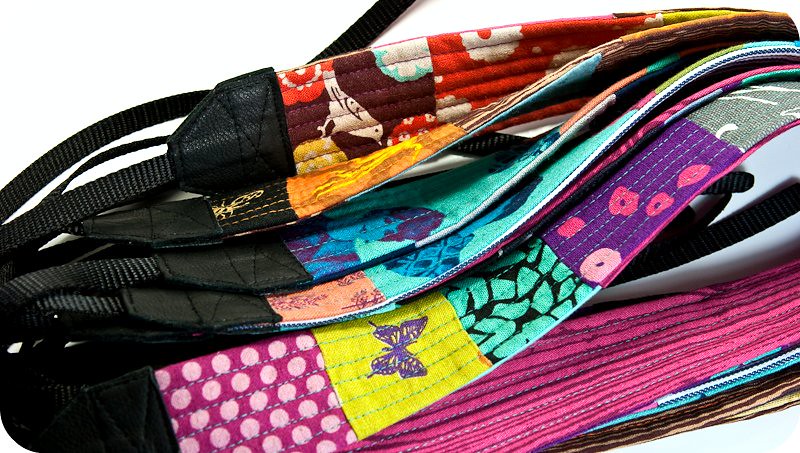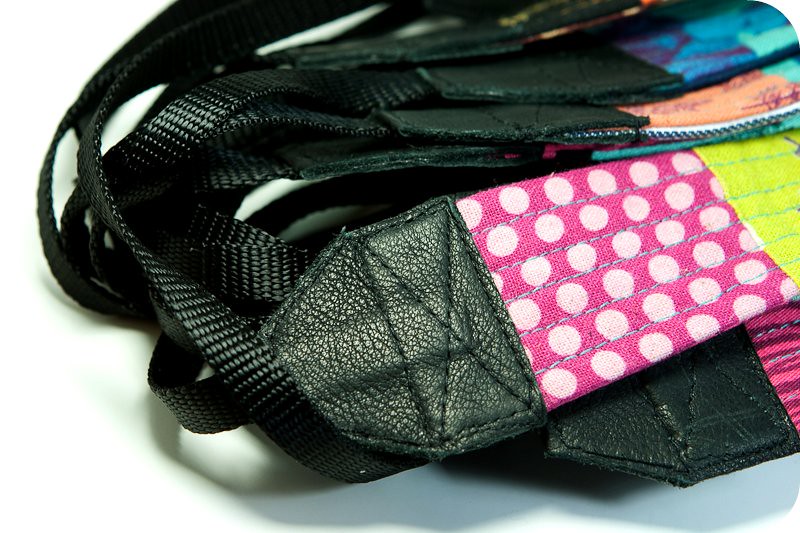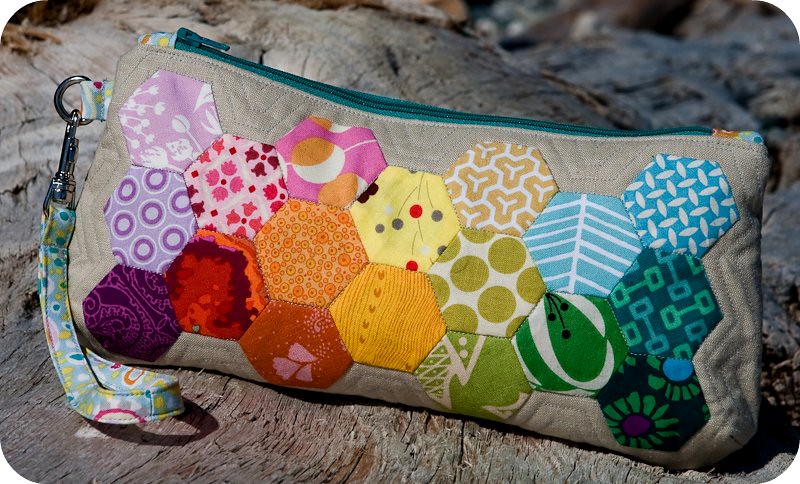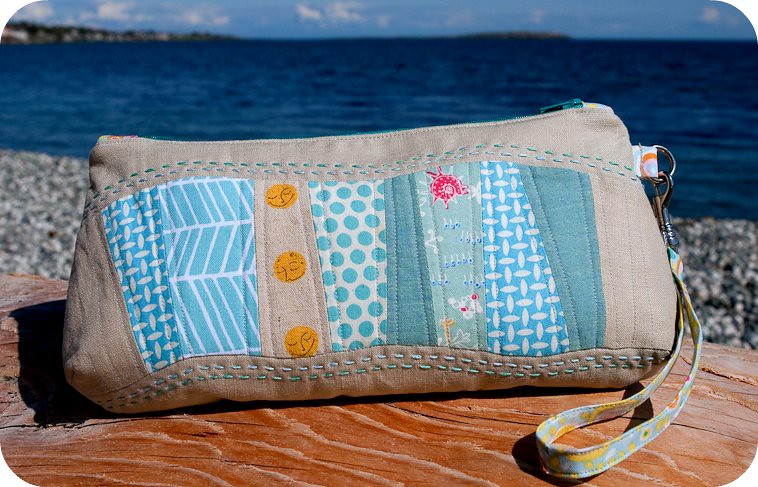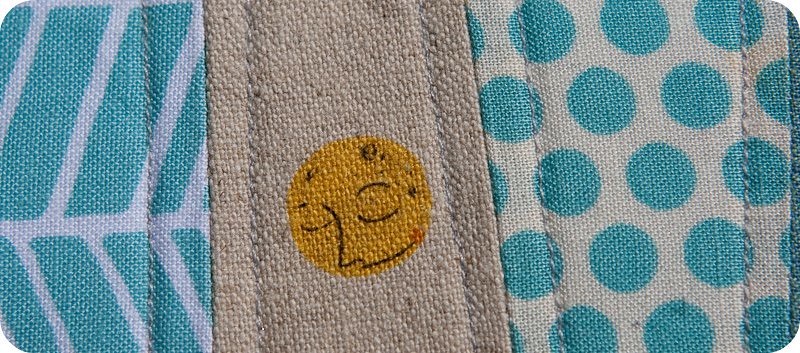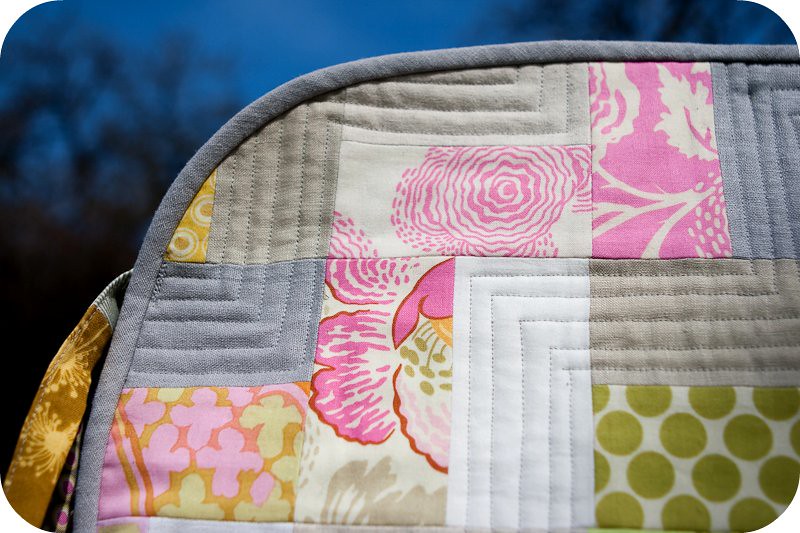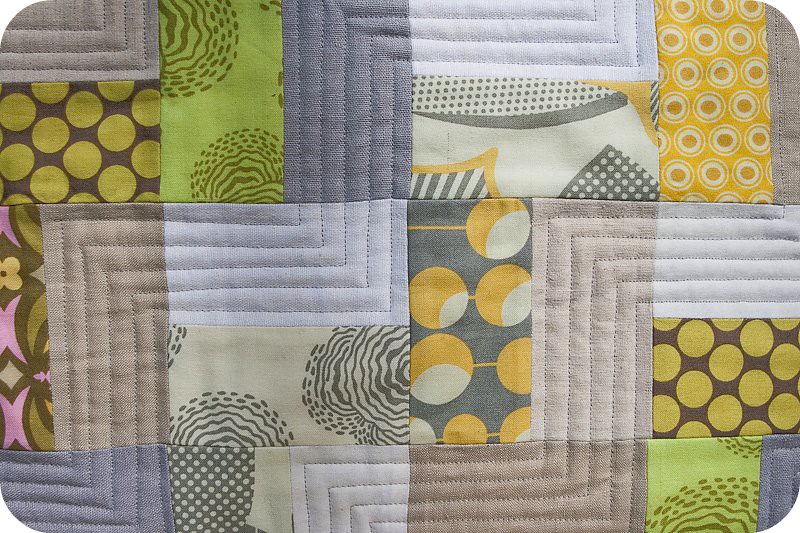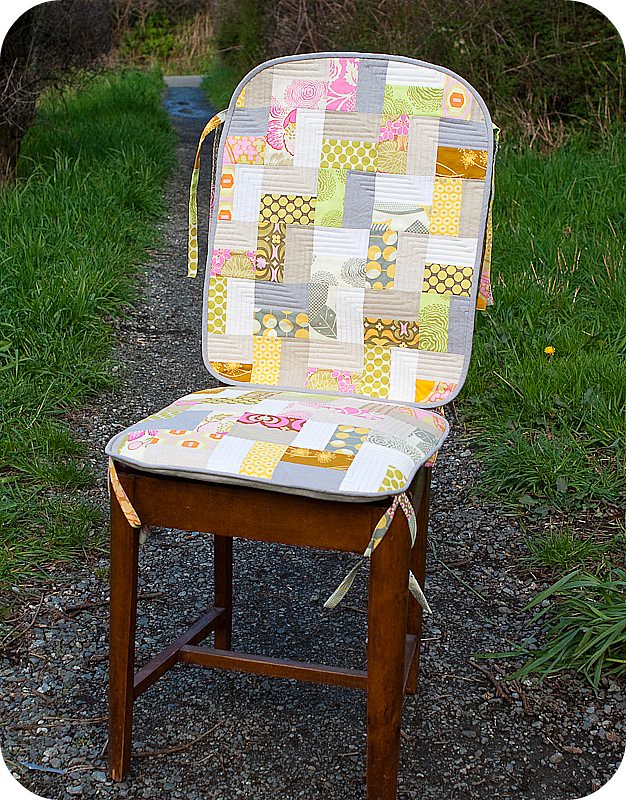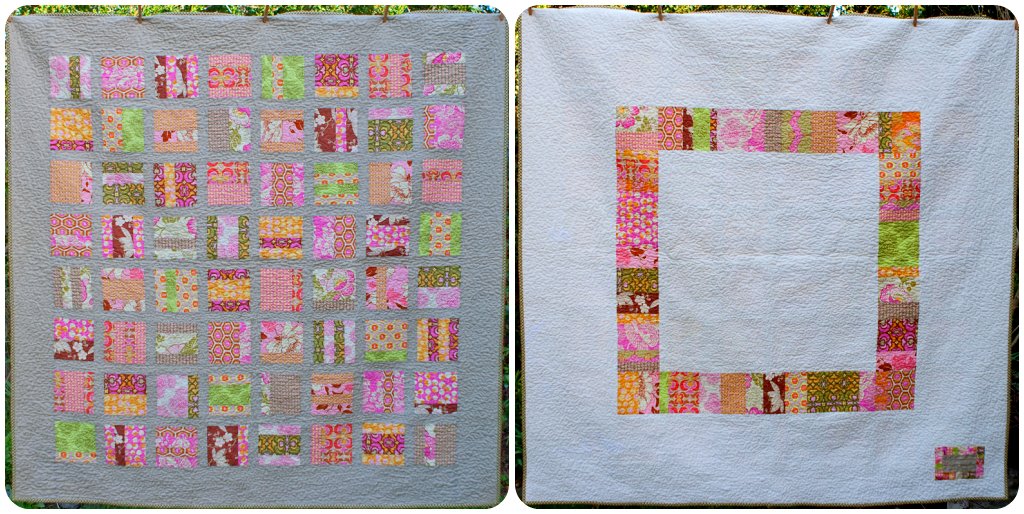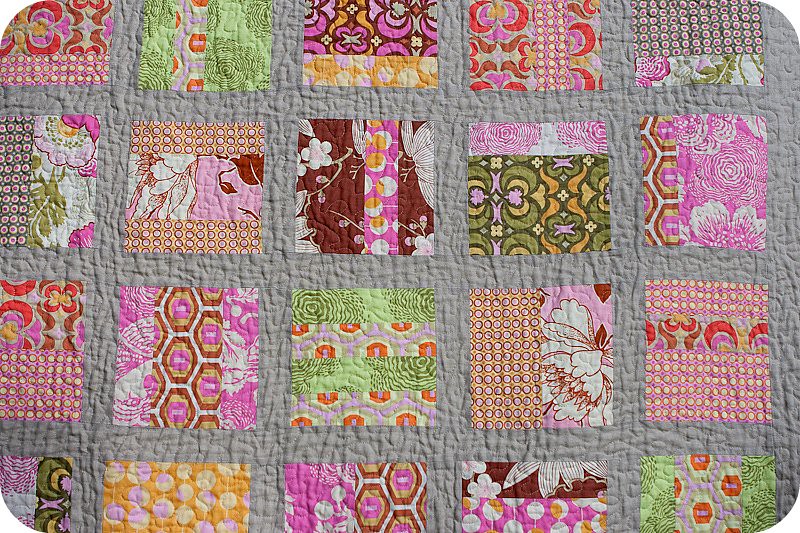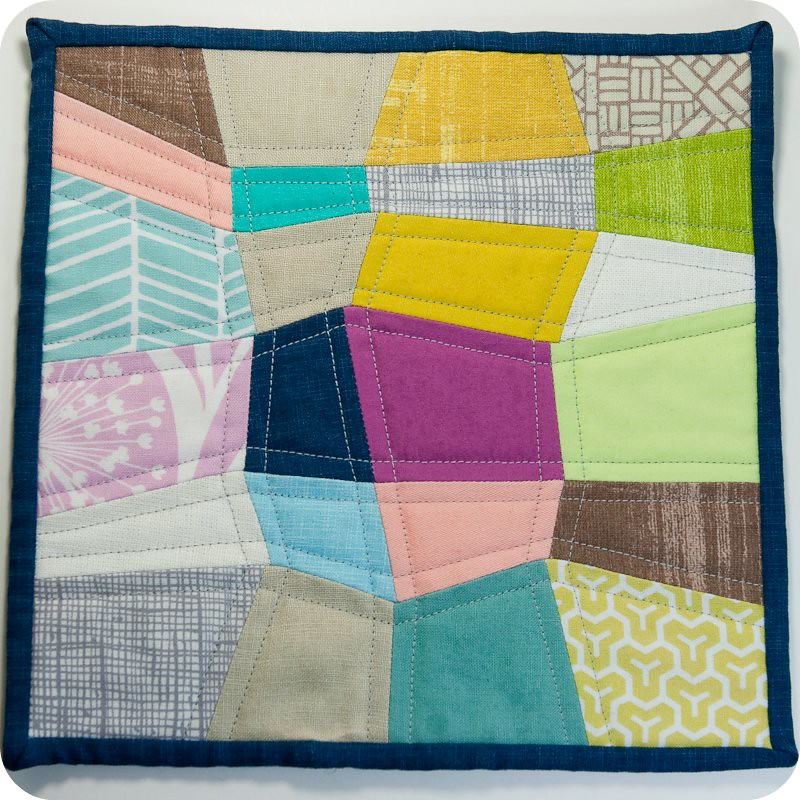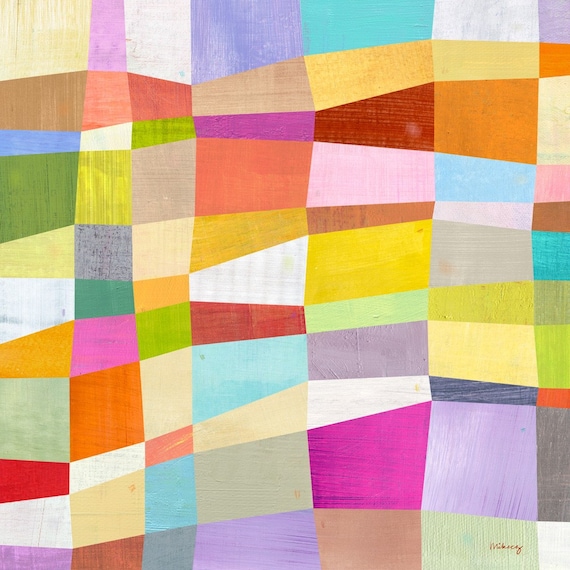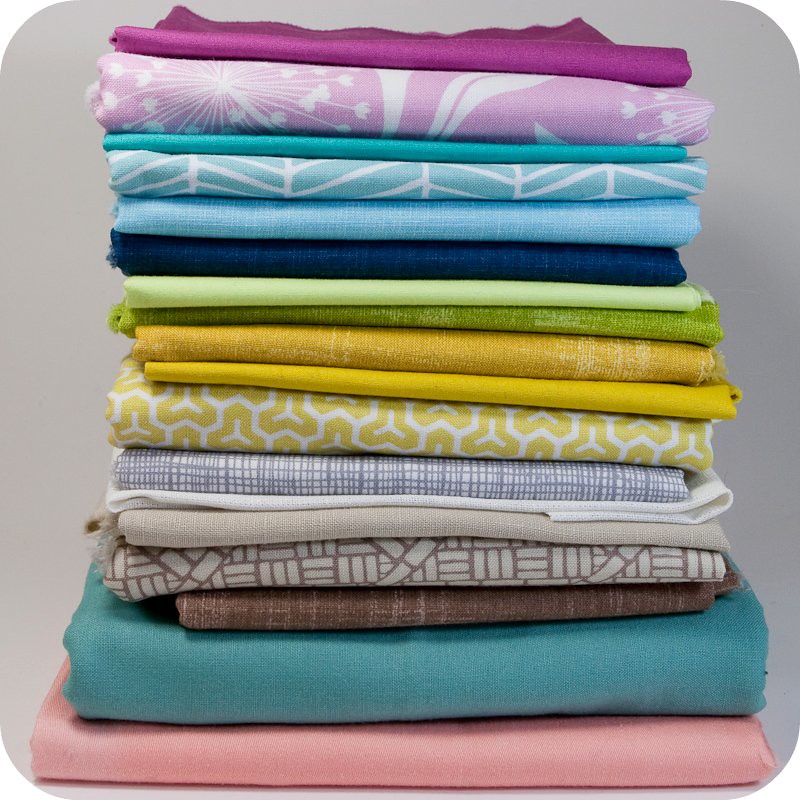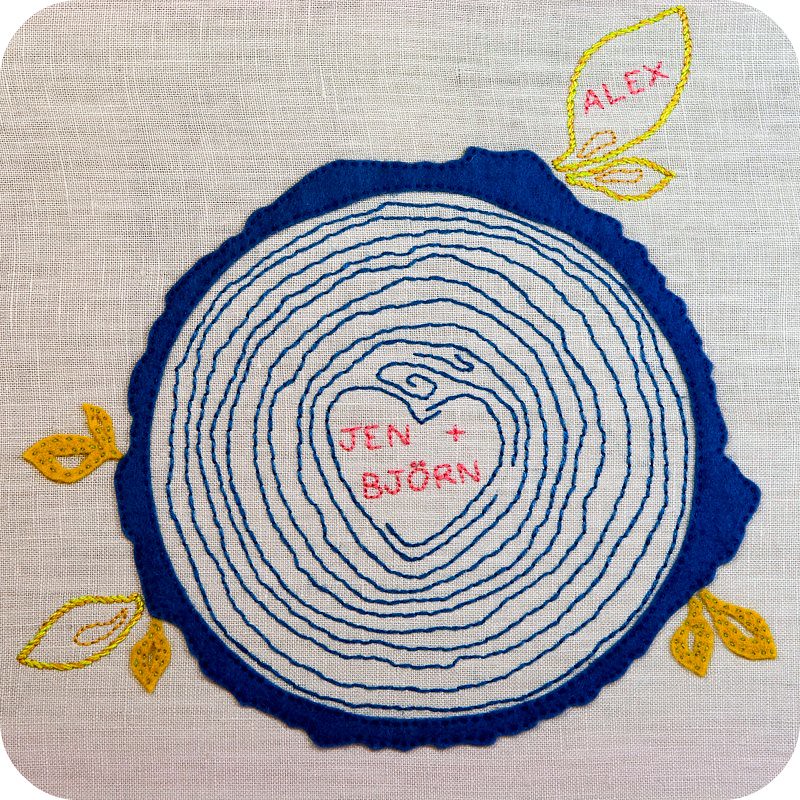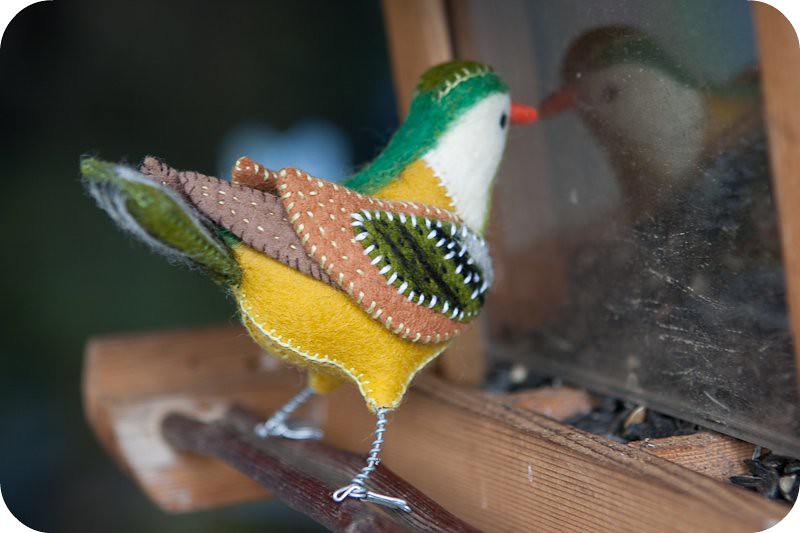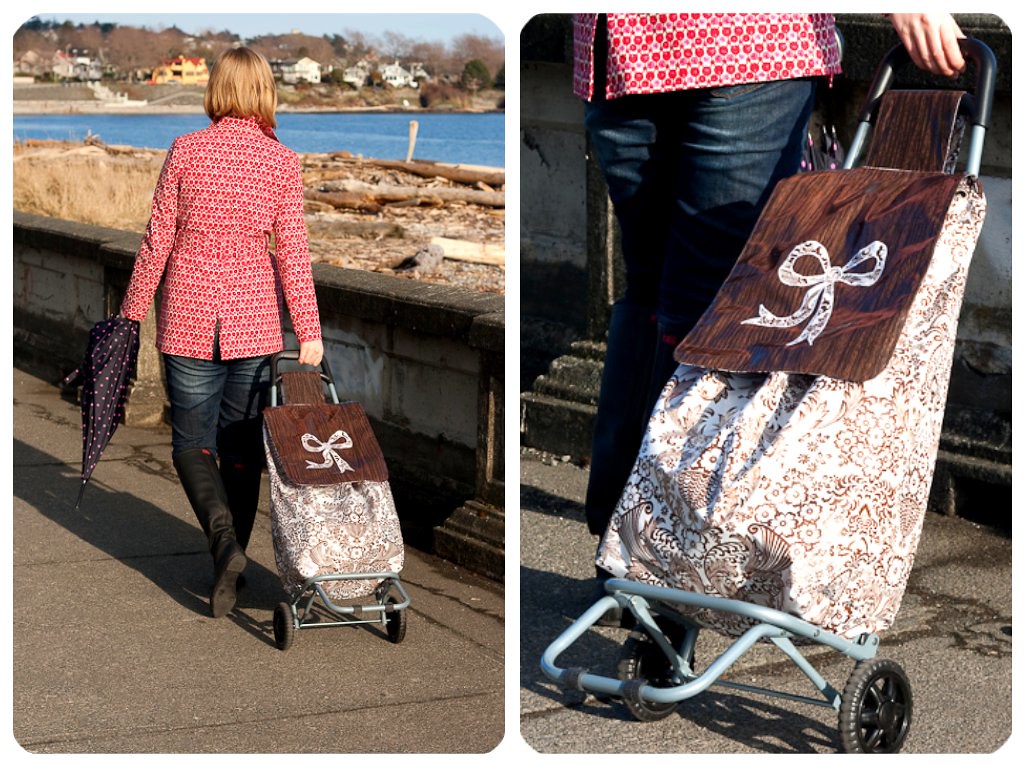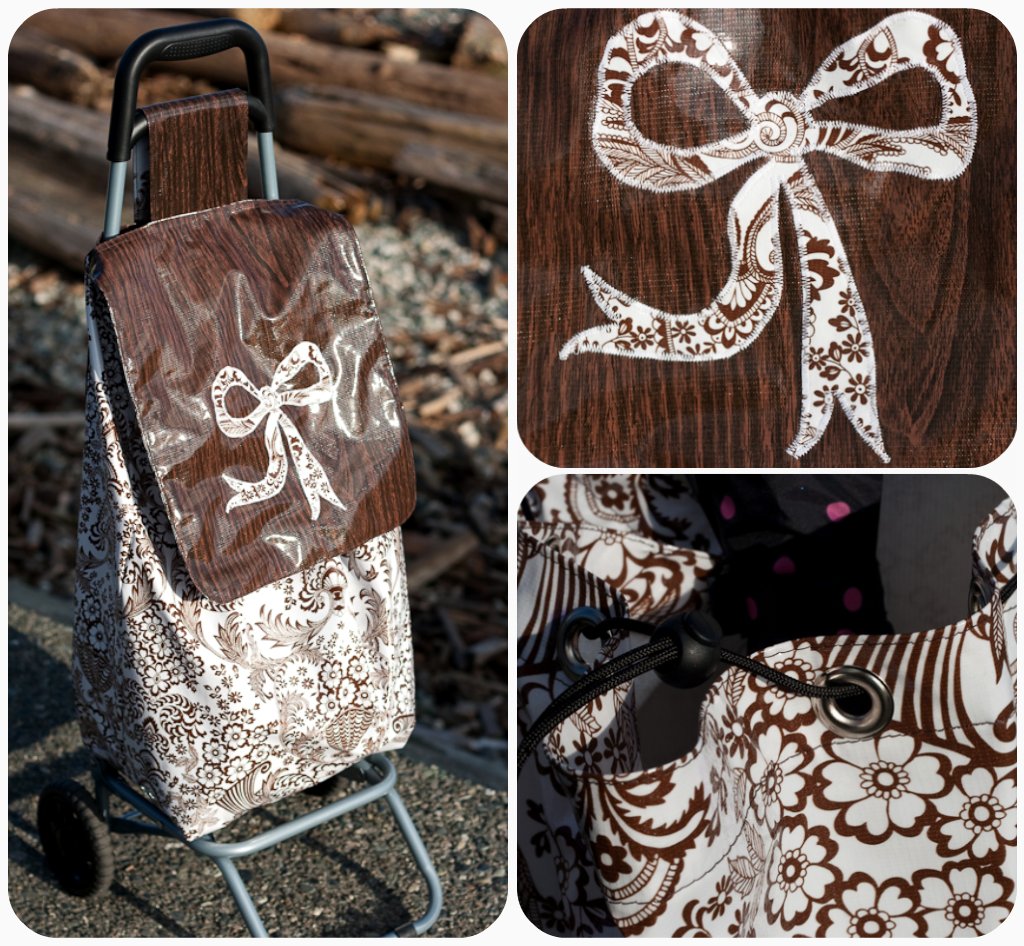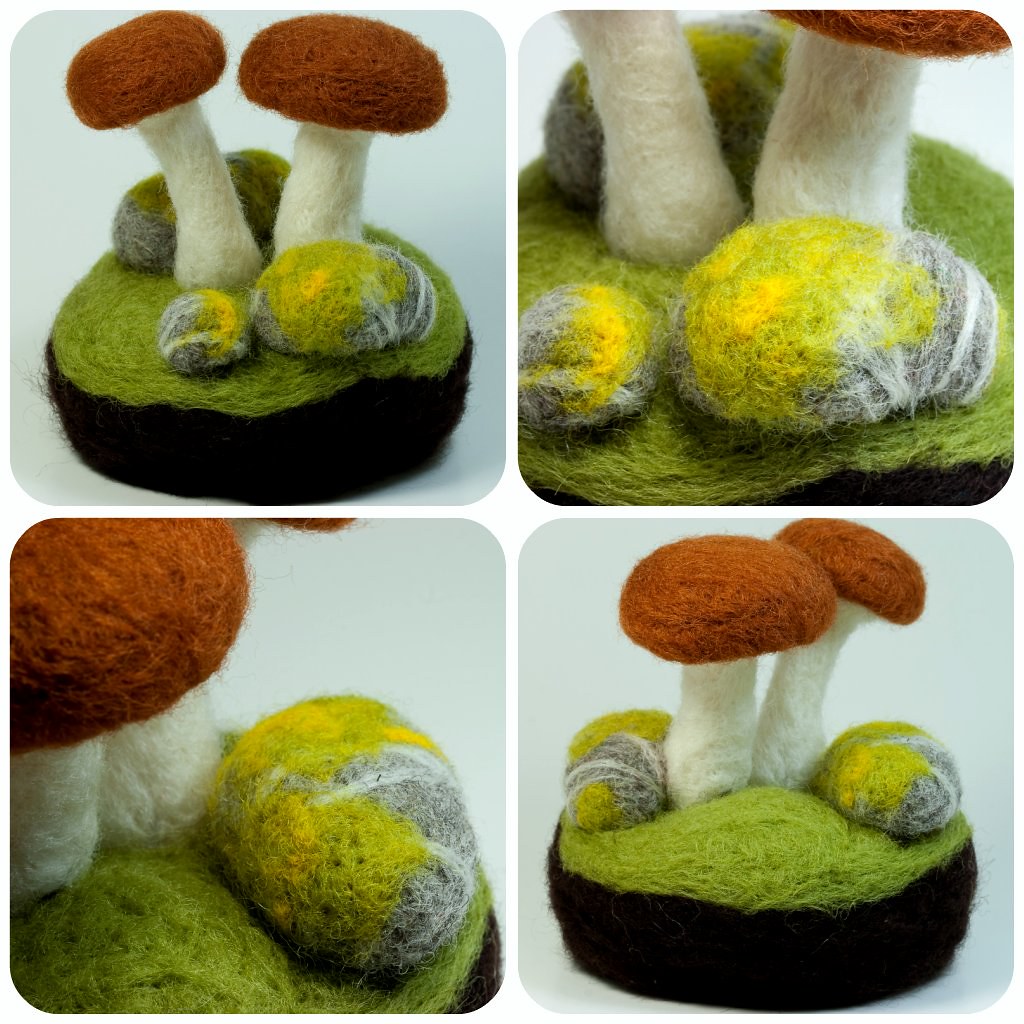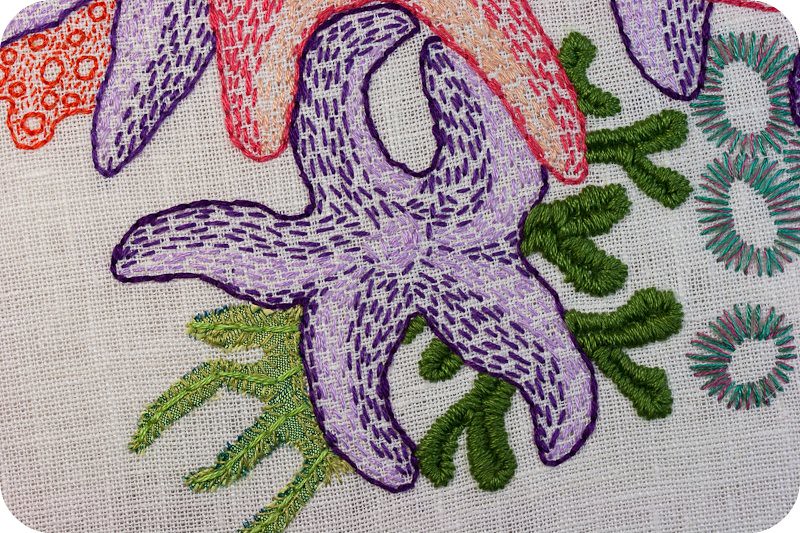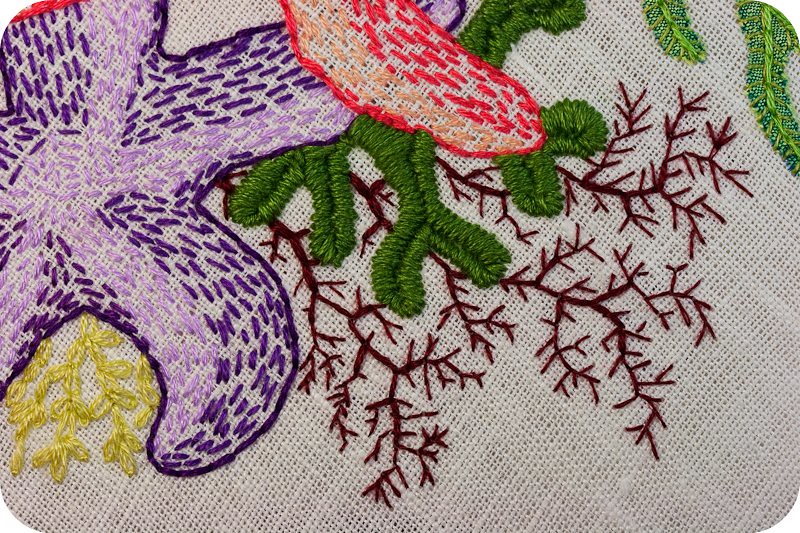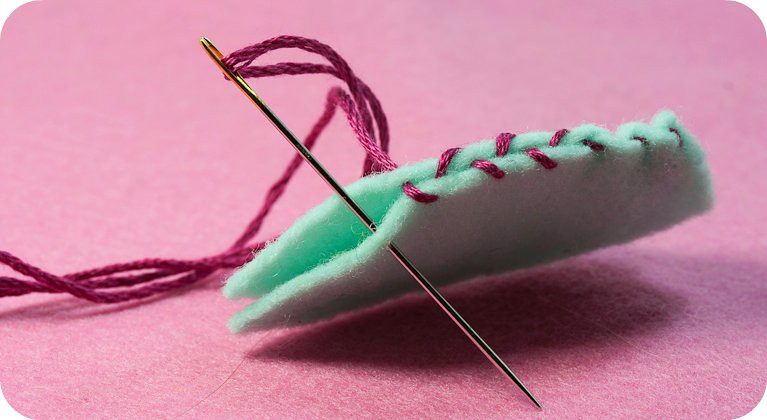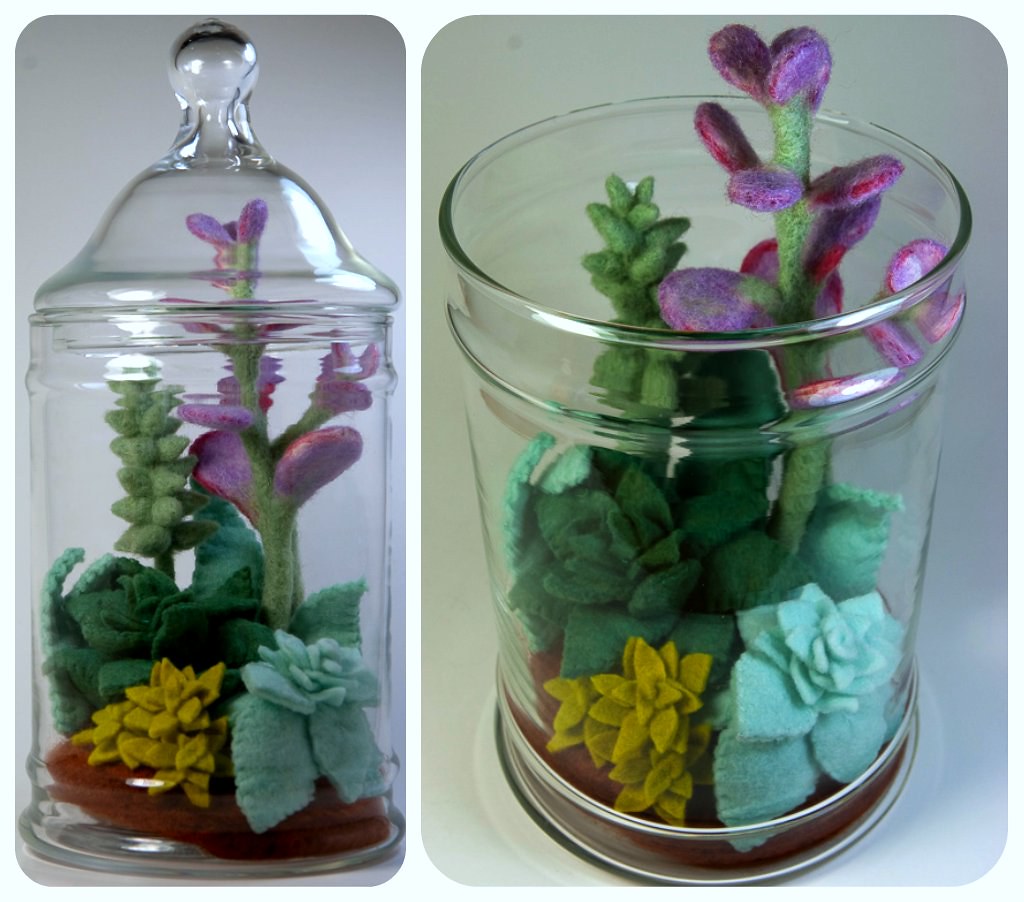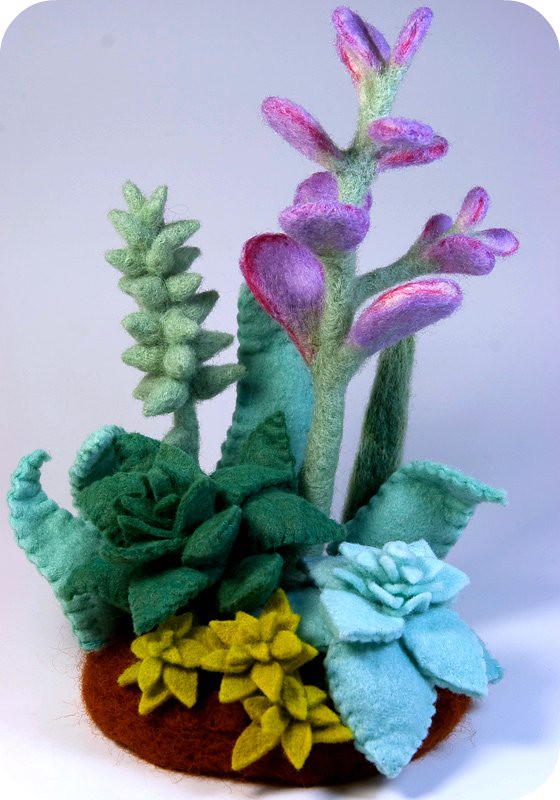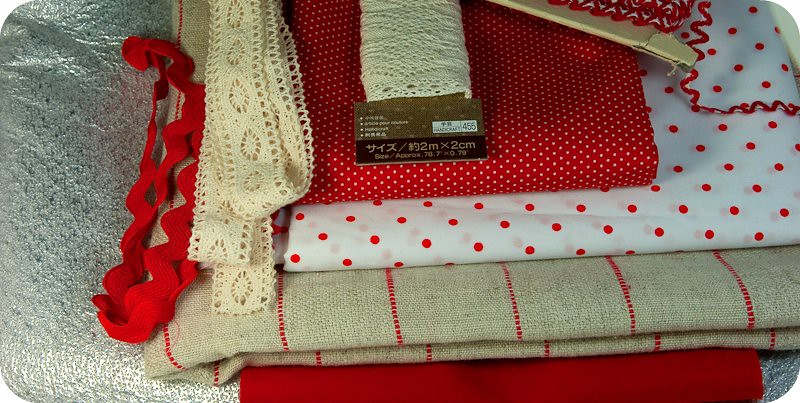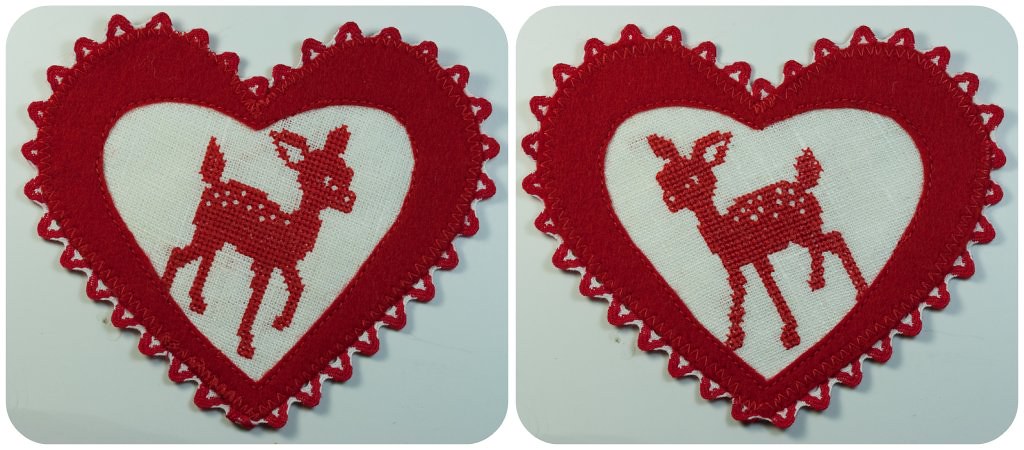Okay
Mug Rug Madness, you got me. I had never before seen the point of making a tiny beautiful patchwork quilt and then hiding it (and/or risking its life) under a cup of tea. That is, not until I came up with a quilt project idea that I would need to test out on a smaller scale first. Now I get it: a quick and easy way to try out new and possibly daunting techniques, to try unexpected colour combinations or to just play around with your scraps. Yay Mug Rugs! Thanks to Erin over at
Two More Seconds, I might be hooked.
The inspiration for my miniquilt (and the large scale quilt which as of yet lives only in my dreams) comes from this gorgeous modern print I found while perusing Etsy the other day.
Melanie's palette choice of bright saturated hues combined with neutrals, and the colour blocks in the design reminded me so much of everything I love about modern quilts. In fact, a lot of her prints look like they would make amazing modern quilt projects. They are so inspiring,
you should really go take a peek. At first glance, I thought that I could achieve this look with improvisational piecing, but then I noticed that each quadrilateral colour block intersects at a single point and I would need to make a pattern. I also realized that sewing the rows of blocks together would require use of the dreaded Y-seam, which is why I tried a tiny version of this before committing to a huge quilt.
Choosing the fabrics for this project was a lot of fun. Are you a fan of the blog
In Color Order? Well you should be. Jeni's series on
The Art of Choosing has really helped me to develop an eye for how to use the fabrics in my stash. I decided that I wanted a palette of neutrals and cool colours, with a few hits of bright pink and yellow for contrast. I also chose to use only solids and colours+white to keep the focus on the geometric quality of the design.
The solids were a combination of natural and white linens, Laura Gunn's Magnolia Lane, Robert Kaufman's Quilters Linen and Pat Bravo's Pure Elements. The prints were from Alexander Henry, Joel Dewberry and Kate Spain. I also used a medium weight turquoise woven, and a lighter weight peach cotton sateen from my stash of fashion fabric.
For my pattern, I measured an 8" square onto the papery side of some freezer paper and added a 1/4" seam allowance around all 4 sides of the large square. Then I took a little ruler and started making 4 sided shapes with intersecting points to fill the square. You really can't go wrong here, but I tried to vary the width of the rows as well as the angles of each shape. Basically, the wonkier your quadrilateral shapes, the better. Number all the pieces, with your numbers facing the same way up so that you will be able to fit it all together again (underline your 6's and 9's!!). After I had carefully cut them all apart, I came up with the idea of drawing some horizontal lines on the pattern to indicate the direction of grain, so you might want to try that too. I just aligned the pattern pieces on the fabric grain as best as I could guess.
I wanted to ensure an element of randomness, so that the colour placement didn't get too fussy and predictable. To achieve this, after I cut out all the shapes, I put them in the randomizer (or "bowl" as some people call it) and then sat at my ironing board, with my stack of fabrics, choosing a piece at random from the bowl and ironing it to the wrong side of whatever fabric came next in the stack. When I had run out of fabrics in my original stack, I picked out all the neutrals and made a new stack, and repeated the process until I had ran out of pattern pieces. This is a variation on the theme of the Paper Bag method devised by the queen of improvisational quilting, Denyse Schmidt. Of course, as supreme ruler of your own quilting universe, you have the power to veto anything the randomizer chooses that you really dislike.
 After ironing the pattern pieces to my fabric I trimmed each piece to include a 1/4" seam allowance around all sides (except where the edge seam allowance was already included) with my rotary cutter. Being really careful in this step makes everything easier to line up later. I left the paper patterns on for the whole sewing process to help make sure I was sewing accurately and then ripped them out gently at the end. How you choose to sew your Y-seams will affect how you proceed to the next step. There are a lot of schools of thought on this, and lots of online tutorials and videos to help you out; this was my first time trying to sew a Y-seam with my machine so if you know a better way, go with your gut.
After ironing the pattern pieces to my fabric I trimmed each piece to include a 1/4" seam allowance around all sides (except where the edge seam allowance was already included) with my rotary cutter. Being really careful in this step makes everything easier to line up later. I left the paper patterns on for the whole sewing process to help make sure I was sewing accurately and then ripped them out gently at the end. How you choose to sew your Y-seams will affect how you proceed to the next step. There are a lot of schools of thought on this, and lots of online tutorials and videos to help you out; this was my first time trying to sew a Y-seam with my machine so if you know a better way, go with your gut.
I chose to align each pair and chain piece them, sewing the seam through each seam allowance. I used my 1/4" foot to make piecing faster and more accurate. When aligning the pieces, I poked a pin through the fabric at each corner to be sure that they were lined up properly. It is trickier to get these right than you would assume due to all the funky angles so I checked each one individually to be sure. (I forgot to take a picture of this, so in the photo below, they are already sewn together). Press open the seams and then attach all the pairs to make complete rows. Press again, although not too enthusiastically, you don't want to steam them or distort them too much.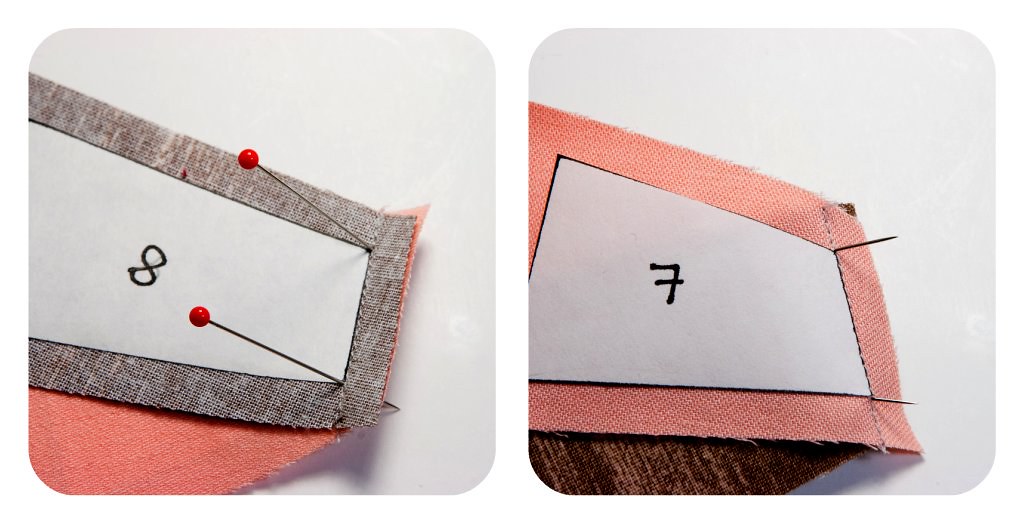 I tried unsuccessfully to get a picture of how I sewed my Y-seams together. Please accept my apologies and watch this helpful video from videojug instead. Sew each matching side together, stopping at the center of each seam, then rotate the top row to line up the next pair of matching sides and sew again. Repeat this process of matching up seams and rotating the row until you reach the end. Again, it is helpful to poke a pin through the seam to check that it comes out at the same point on the other piece. I rotated the top row with the sewing machine needle down in the center seam, and I found that the fabric aligned smoothly.
I tried unsuccessfully to get a picture of how I sewed my Y-seams together. Please accept my apologies and watch this helpful video from videojug instead. Sew each matching side together, stopping at the center of each seam, then rotate the top row to line up the next pair of matching sides and sew again. Repeat this process of matching up seams and rotating the row until you reach the end. Again, it is helpful to poke a pin through the seam to check that it comes out at the same point on the other piece. I rotated the top row with the sewing machine needle down in the center seam, and I found that the fabric aligned smoothly. 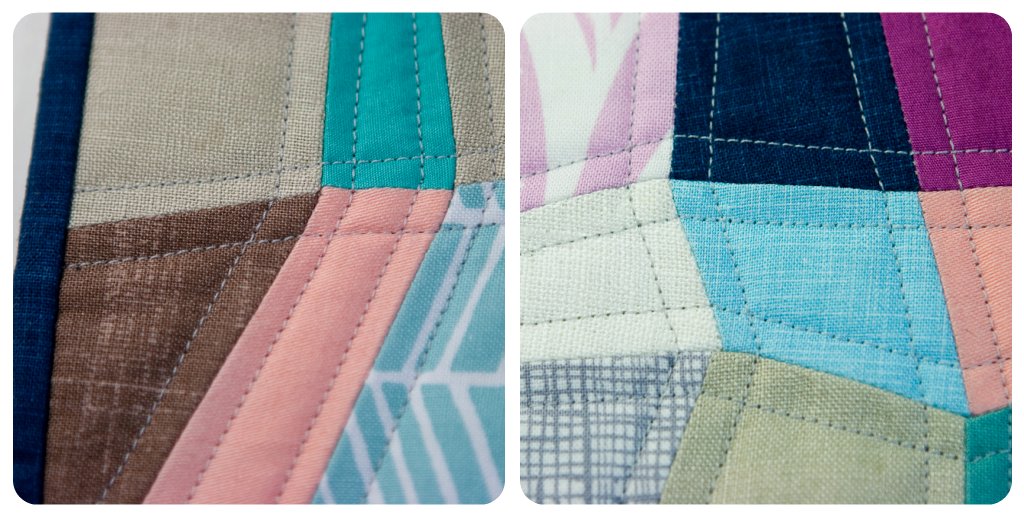
Look how neatly some of my points line up! A few seams were off by a millimeter or so, but the finished block lies flat and with no waves or wrinkles so I was pretty happy with my first attempt at sewing Y-seams on my machine. I backed my mini-quilt with the beige linen, and used the dark blue quilters linen for the binding. I had a tough time deciding how to quilt this, but eventually went with a light grey thread and my walking foot to make parallel lines of stitching along all the seams. I think it accentuates the geometric pattern perfectly.
And now the obligatory pretty mug rug shot with my cute little cupcake mug from Momiji. I love my little mug, my mom got it for me for my birthday years ago and it always makes me smile when I use it.
So the goal now is to try to translate this project into a full size quilt (or maybe a lap quilt?). Making the full size pattern might be challenging, but I think it is still doable. I am not sure how I would quilt a larger version. I like my quilting pretty dense, so maybe alternating directions of close parallel lines in each block, or even an angular spiral within some of the blocks will accentuate the overall design.
Did any of you make mug rugs for Mug Rug Madness? I would love to hear about your inspiration. I hope some of you try making a cute little quadrilateral quilt like this, it was a great way to practice a tricky skill, and it makes a really modern and spectacular looking block.

